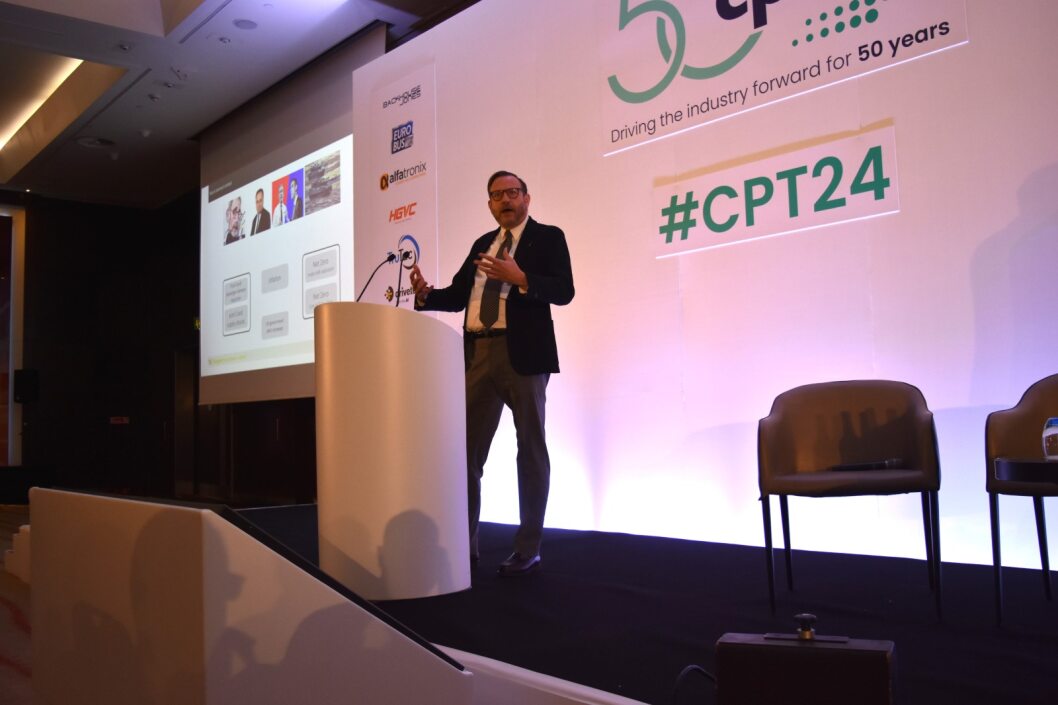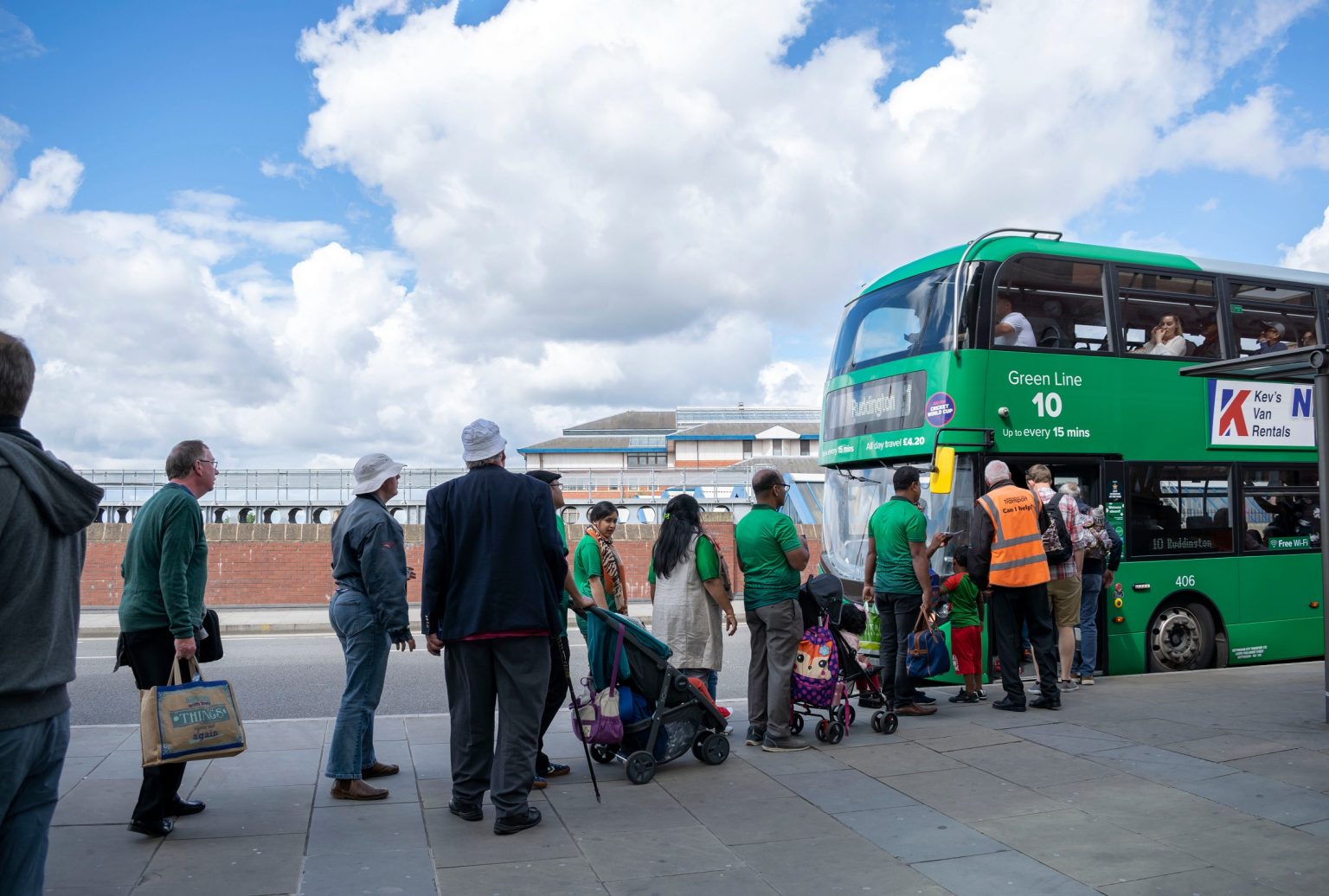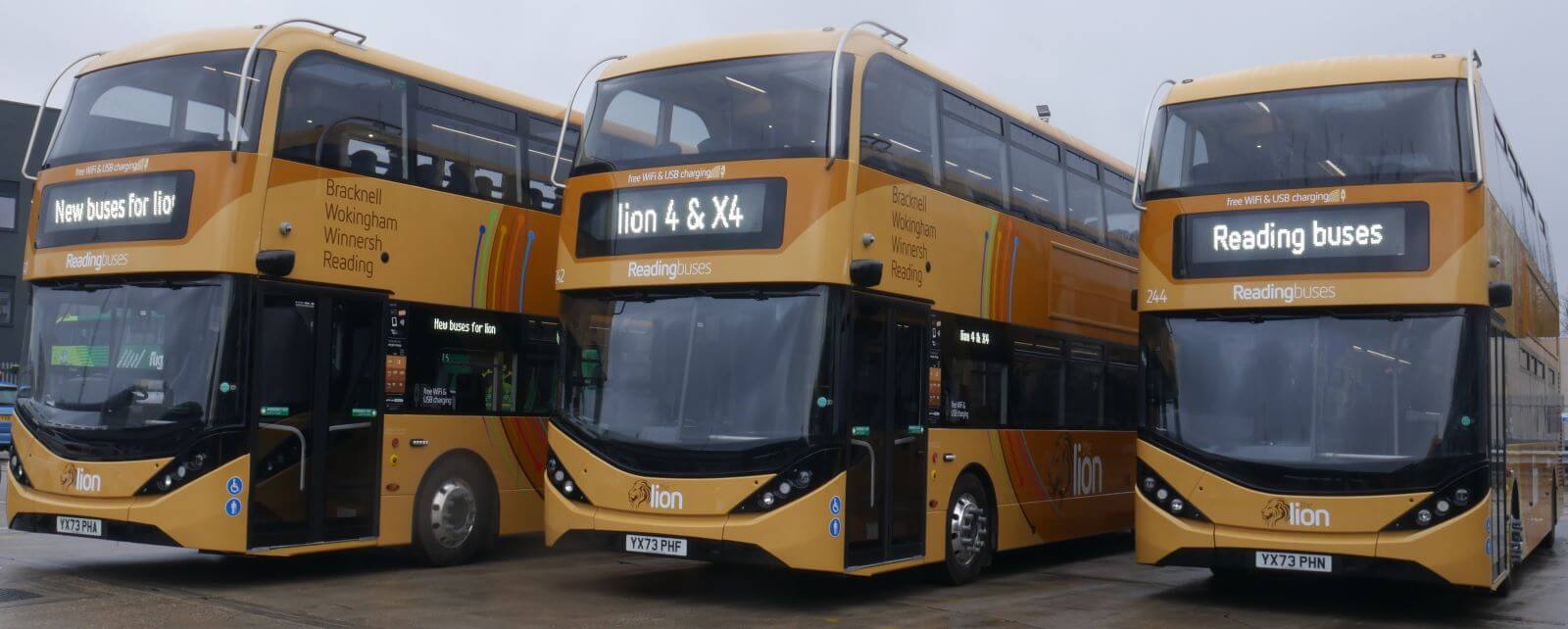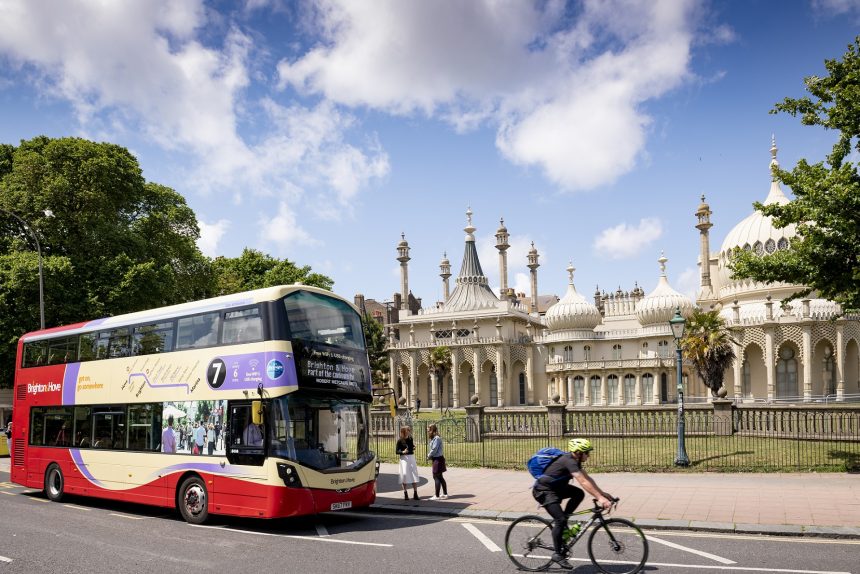The Department for Transport’s (DfT) annual bus patronage statistics reveal a startling disparity across local authorities (LAs). In terms of passenger journeys per head, the latest available data show that the top three LAs are at least 25% more successful than the next best and more than three times better than the national average outside London.
Brighton and Hove (140.3), Nottingham (117.6) and Reading (101.1) comfortably topped DfT’s bus journey per capita data for the year ending March 2023. Only six other LAs surpassed 60 and the average outside London was 33.8.
Of course, a degree of the difference can be put down to many factors, such as demographics and geography. For example, it is not difficult to see why London, as a region rather than LA, registers more than 200 journeys per head, while rural county authority Rutland, with only two towns within its borders, languishes at the bottom of the table on 3.3.
However, clearly the numbers from those LAs with highest patronage offer hope to the many similar towns and cities around the country. That was the view presented by David Leeder, Director of Transport Investment Limited (TIL), during his speech at the Confederation of Passenger Transport Conference in London in January.
He tells delegates that the measures being used in such areas are “not experimental”. He adds: “There’s nothing mysterious going on in Nottingham or Reading. The positive news is places like Brighton, Leicester, Nottingham, Reading — they are showing what can be achieved with nonexperimental measures.”
The need for speed
London comes in for particular attention because he feels that, despite very high patronage largely due to high population density and low car ownership, it has been declining there more significantly than elsewhere because of congestion. David tells us in an interview in January: “With favourable conditions but unfavourable traffic speed, you will get patronage decline.”
Brighton and Hove’s bus services benefit from being a “mini-London”, due in part to the sociodemographic make-up, according to David, who is a former First Group UK Bus Division Managing Director. However, he points out some of what Brighton is doing well: Buses serving the city centre well, bus lanes “in the right place” and often protected from car incursion by rails, and good marketing.
He says: “One of the problems with bus-lane programmes is it’s often easier to put bus lanes where there’s no congestion. In Brighton, the bus lanes are where there is congestion.”
David, whose consultancy TIL is comprised of a group of senior executives in the bus and rail industry, adds: “There are multiple things that can be done, but of course the reason these are not being done, I would say, is principally because they are politically difficult…

“It’s striking that, in London, they’re prepared to put in cycle lanes in the face of public opposition. But they’re not prepared to put in bus lanes in general — in fact, they’re prepared to remove them.”
He elaborates further on bus priority by adding: “I think one can over complicate it, but what you’re trying to do is not really increase the speed of the bus. What you’re trying to do is increase the speed of the passenger. So … things like, where is the bus stop? In Brighton, the bus stops are conveniently located.”
The Nottingham success story
David says cities such as Leicester, which has been gaining traction in terms of patronage, and Nottingham are interesting because they are less like London and Brighton and more typical of many towns and cities in the UK. “They are doing some of the Brighton-type things, but in a less favourable garden, if you use the Monty Don analogy,” he says.
Despite that, Nottingham has a few aspects which make the soil more productive, such as low car ownership and a large student population. That said, the local council offers reasons why the most has been made of the conditions. It highlights that it has as the main operator Nottingham City Transport, which is majority council-owned, as well as Trentbarton and community operator CT4N, which are both locally owned.
Places like Brighton, Leicester, Nottingham, Reading — they are showing what can be achieved with nonexperimental measures – David Leeder
Nottingham City Council’s (NCC) own survey last summer revealed that more than 70% rated the city’s public transport system either four or five out of five. Meanwhile, when it came to perception of safety on public transport, 94% of people said they “felt safe” or were “neutral” about it.
It also points out the 1,250 real-time information displays, 26km of bus lanes, the accessibility of buses and discounted tickets for under-22s.
Nottingham is one of the few cities in the UK to have trams. However, these are not seen to be in competition with buses as, boosted by multi-modal and multi-operator ticketing across bus, tram and train, they are working together to get people out of cars.
Councillor Angela Kandola, NCC Portfolio Holder for Transport, Highways and Planning, says: “The bus and tram networks have flourished together and it’s giving a choice of transport to the citizens.”

The Linkbus services for commercially unviable routes, which are largely paid for by the council, were under threat recently due to council budget constraints, but they have been saved for at least the coming financial year via alternative funding streams.
It seems Nottingham highlights the need for a good relationship between operators and the local authority, as well as having people within the latter who believe in public transport. Angela says: “We have a fantastic partnership with operators, who are in favour of what we’re doing and how we’re doing it.
“We are very lucky that everyone believes in public transport here,” says Angela. “We’re proud of what we’ve got. I’ve been portfolio holder for highways and transport since May last year and I see that passion and commitment and drive to push public transport.”
David agrees, adding: “I think probably all of these places where there’s success there are good people on both sides.
“You have to have the right people in the right place. They (the operators) also have to understand the language and the thinking of local government. But they also have to try and persuade local government to understand the economics of the private sector.”
Frequency and reliability in Reading
At number three on the English LA patronage leaderboard, Reading has also succeeded better than all but three other authorities at retaining passengers since 2010.
Robert Williams, Chief Executive Officer of the town’s main operator, Reading Buses, offers his view on the reasons behind the success: “There are a number of complimentary factors that contribute to the level of bus use in Reading.
“It is a largely urban area which has incorporated good bus priority measures as it has grown.
“This included the first contraflow bus lane in the country in 1968 as one-way systems were being introduced around the town centre, and continues with Bus Service Improvement Plan Plus-funded additions now.
“This has allowed services to be efficiently operated, and continued local ownership of the main bus company has allowed those benefits to be reinvested back into the network, essentially providing the town with a return on its investment, and growing patronage further.

“The key factors influencing growth in addition to local economic performance are frequency, reliability, quality, price, bus company strategy, and a close awareness of local circumstances.
“As we have grown beyond Reading, we have retained local management teams that can be responsive to things in their areas.
“Modal share surveys indicate that the majority of Reading’s population growth in the last 20 years has been facilitated by growing the proportion of people who use the bus, and not the number of cars.
“Our strategy of being people-focused with a stable, trained workforce who like working with people, making significant investments in vehicles and technology, using ultra-localised route branding, and maintaining a full range of publicity from apps to leaflets and roadside timetables, has helped to maximise the number of people we carry each day.”
Using money wisely
David’s speech at the CPT Conference focused on the evidence for a potentially difficult period ahead when it comes to finding public funds for the like of bus operations. However, he says: “The good news for the bus industry is that quite small amounts of money spent in a targeted way would make a big difference.”
Elaborating on that in our interview, he stresses the need to invest the money correctly on, for example, bus priority rather than on heavily discounted fares and elaborate bus stations.
He adds: “If I were an operator these days, I would try and link the electric vehicles to delivery of bus priority. Because another absurdity in London is we have very expensive electric vehicles going at very low speed. That makes no sense at all, including from an environmental perspective.”




























